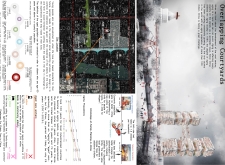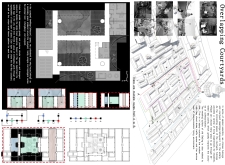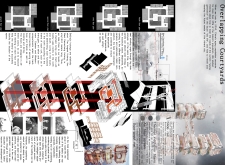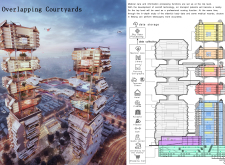5 key facts about this project
The design focuses on creating a living environment for an aging population, set within an urban context in China. It combines features of traditional architecture with modern needs. The main idea revolves around overlapping courtyards that connect public spaces with residences for elderly individuals. This approach addresses the growing number of older adults, expected to exceed 450 million by 2050. It aims to foster community and enhance the quality of life for residents.
Design Concept
Traditional courtyard dwellings, known as siheyuan, and hutongs form the basis of the design. These architectural elements are familiar to many, encouraging social ties among residents. By integrating these styles, the design seeks to provide both a sense of community and private areas for individual reflection. The layout promotes accessibility, enhancing the interaction between people who live there.
Technological Integration
Technology is essential in improving the living conditions for elderly residents. The project incorporates health monitoring systems that prioritize safety and well-being. These features cater to various mobility and health needs. The use of smart technology ensures that living environments are responsive, providing a well-supported atmosphere for everyone.
Healthcare Accessibility
Healthcare facilities are intentionally positioned within the residential area. This strategic placement allows for easy access to medical services, addressing a significant concern for older adults. By making healthcare more accessible, the design simplifies the process of receiving care. This focus on health resources reinforces the commitment to supporting the needs of the aging population.
Sustainability Features
The design also emphasizes sustainability, using materials and systems that enhance energy efficiency. Solar panels are included to promote renewable energy use. Innovative materials, like biomimetic fiber for insulation, improve comfort while reducing reliance on heating and cooling. Advanced air filtration systems are integrated to ensure a healthy indoor environment, which is crucial for residents’ quality of life.
The layout showcases attention to detail, particularly in creating communal spaces that encourage interaction. These gathering areas are strategically placed, promoting connectivity among residents. This thoughtful arrangement adds to the overall sense of community, fostering a lively atmosphere within the urban setting.






















































